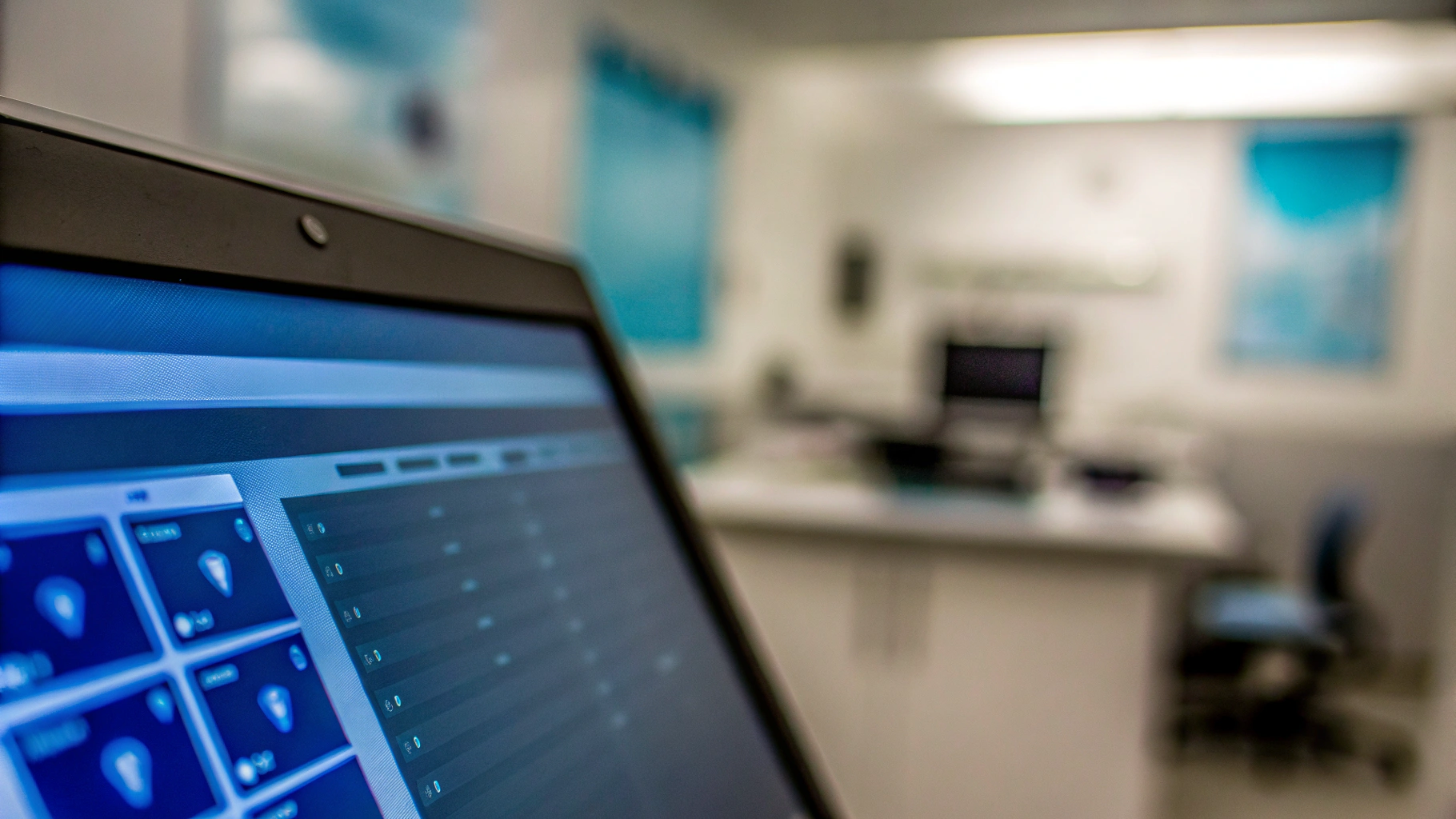10 Key Benefits of Electronic Data Capture Software for Compliance Officers

Overview
The key benefits of electronic data capture (EDC) software for compliance officers are substantial:
- Enhanced regulatory compliance
- Improved data quality
- Increased operational efficiency
- Real-time data access
These advantages collectively contribute to superior management of clinical trials. EDC systems automate data collection, significantly minimizing errors and ensuring adherence to regulatory standards. This automation not only streamlines processes but also leads to faster study timelines and ultimately improves patient outcomes. By adopting EDC solutions, compliance officers can navigate the complexities of regulatory requirements with greater ease and effectiveness.
Introduction
The life sciences sector is confronted with a continuously shifting landscape of regulatory compliance challenges, underscoring the critical need for innovative solutions. Electronic Data Capture (EDC) software stands out as a transformative tool for compliance officers, delivering a range of advantages that streamline data management, enhance accuracy, and promote collaboration.
As the demand for efficient and compliant clinical trials escalates, organizations must ask themselves: how can they fully harness the potential of EDC systems to adhere to stringent regulatory standards? This question is pivotal in navigating the complexities of compliance in today's environment.
AVS Life Sciences: Enhanced Regulatory Compliance through EDC Software
AVS Life Sciences utilizes electronic data capture software to tackle critical compliance challenges within the life sciences sector. By automating information gathering and management, regulatory officers can ensure that all data is captured accurately and meets essential legal requirements, including FDA 21 CFR Part 11 and GXP standards. This automation not only mitigates the risk of non-compliance but also enhances the overall quality of information gathered during clinical studies, thereby facilitating adherence to stringent regulatory standards.
Furthermore, EDC systems streamline regulatory procedures by providing immediate access to information, which accelerates decision-making and fosters collaboration among research teams. As compliance officers increasingly recognize the benefits of EDC software, they report heightened efficiency and reduced monitoring costs, ultimately leading to faster study timelines and improved patient outcomes.
Recent trends in electronic information capture reveal a rising demand for systems that support decentralized trials and incorporate advanced analytics. This trend underscores the growing significance of EDC in modern clinical research, making it imperative for compliance professionals to engage with AVS Life Sciences and leverage these innovative solutions.

Improved Data Quality: Ensuring Accurate and Reliable Results
The role of electronic data capture software is crucial in improving information quality by significantly minimizing manual entry mistakes and ensuring consistent formatting and validation. This enhancement is vital for oversight officials, who are responsible for presenting precise information to regulatory authorities. For instance, studies utilizing EDC systems have reported error rates as low as 0.14% for double-data entry methods, while single-data entry methods have a pooled error rate of 0.29%, and optical scanning methods show a pooled error rate of 0.74%. Furthermore, organizations that have adopted electronic data capture software solutions have experienced a 26% reduction in queries during clinical trials, particularly when utilizing EDC templates. This leads to more reliable results and facilitates better decision-making throughout the clinical trial process.
A recent case study by AVS Life Sciences demonstrates how their expertise in modernizing a biotechnology GMP facility not only enhanced manufacturing capabilities but also improved quality assurance and regulatory adherence. The successful transition to a Level 2 GMP facility allowed for better oversight of processes, and important lessons learned regarding test result anomalies prompted the QC laboratory team to evaluate their business processes. Industry specialists stress that focusing on secure information exchange via electronic data capture software builds trust and enhances patient involvement and retention, ultimately leading to improved accuracy in pharmaceutical research.
The incorporation of advanced analytics within EDC platforms further enables oversight personnel to track key performance metrics, ensuring that information integrity is upheld throughout the study lifecycle. To maximize the advantages of electronic data capture software, compliance officers should routinely assess and enhance their information management practices to ensure alignment with regulatory standards and ongoing improvement.
Increased Operational Efficiency: Streamlining Data Collection Processes
The use of electronic data capture software significantly enhances operational efficiency by automating information collection and minimizing reliance on paper-based processes. Compliance officers experience substantial time savings, allowing them to focus on strategic initiatives instead of being mired in manual data entry. This transition is especially vital for meeting stringent deadlines and ensuring adherence to regulatory requirements, including the stages of computer system validation outlined in the GAMP 5 Guide.
For instance, regulatory officers have noted that implementing EDC systems allows them to save considerable time, which can then be allocated to critical regulatory tasks such as:
- Installation Qualification (IQ)
- Operational Qualification (OQ)
- Performance Qualification (PQ) testing
By streamlining information gathering and automating manual record input, electronic data capture software not only minimizes the risk of errors linked to manual processes but also encourages a more flexible regulatory environment. Ultimately, this supports the primary goal of regulatory compliance, ensuring that all documentation aligns with Good Documentation Practices and FDA guidelines.

Enhanced Data Security: Protecting Sensitive Clinical Information
Electronic data capture software is designed with advanced information security features, including robust encryption protocols and stringent access controls, to safeguard sensitive clinical details. By implementing role-based access and multi-factor authentication, regulatory officers ensure that only authorized personnel have access to critical data, significantly reducing the risk of data breaches. This commitment to security measures is essential for upholding regulations like HIPAA, which oversees the safeguarding of patient information. Furthermore, these security protocols promote confidence among study participants and regulatory bodies, thereby strengthening the integrity of the clinical research process.
Ongoing monitoring and auditing of EDC systems are crucial for swiftly recognizing security threats and ensuring alignment with GXP and FDA regulations. With over 80% of clinical studies not meeting regulatory standards, the adoption of electronic data capture software not only enhances information security but also improves adherence rates, allowing organizations to effectively manage the challenges of regulatory oversight. Additionally, comprehensive user training is vital to mitigate risks posed by user errors and malicious insiders, further fortifying the overall security framework and supporting best practices in quality management.

Real-Time Data Access: Facilitating Immediate Insights
The use of electronic data capture software empowers oversight officers with real-time information access, enabling ongoing monitoring of adherence throughout the clinical study process. This prompt access facilitates the quick recognition of potential problems, allowing for timely actions that uphold regulatory standards. Statistics indicate that 62% of professionals do not obtain their information in real-time, leading to delays that can jeopardize trial integrity.
By implementing electronic data capture software, organizations can significantly reduce these delays, as this software provides centralized information storage and ensures compliance with regulatory standards such as FDA 21 CFR Part 11 and GDPR. Furthermore, adhering to Excellent Documentation Practices and Standard Operating Procedures (SOPs) is essential for maintaining information integrity and regulatory compliance.
Real-time data access fosters collaboration among stakeholders, minimizing miscommunications and enhancing overall project efficiency. As regulatory officers increasingly rely on electronic data capture software, they can expect improved monitoring capabilities, which ultimately lead to better patient outcomes and adherence to regulatory requirements.
Improved Collaboration: Enhancing Communication Among Stakeholders
The electronic data capture software significantly enhances collaboration by offering a centralized platform that connects all stakeholders involved in a clinical trial. Regulatory officers play an essential role in facilitating communication among researchers, sponsors, and oversight bodies, ensuring alignment on regulatory requirements. This enhanced teamwork simplifies procedures and reduces the chance of misinterpretations that could result in regulatory problems.
With 92% of hospitals and health systems adopting decentralized or hybrid studies, the need for effective communication tools has never been more critical. By utilizing electronic data capture software, oversight officers can ensure that all parties are informed and engaged, ultimately fostering a more efficient and adherent clinical trial environment. As highlighted by industry specialists, when sites and sponsors adopt technology, they can cooperate on studies from a distance, improving overall study effectiveness and adherence.

Compliance Assurance: Generating Data that Meets Regulatory Standards
The electronic data capture software is meticulously crafted to generate information that adheres to regulatory standards, providing oversight officers with the confidence that their records are audit-ready. By integrating robust validation checks and compliance monitoring features, electronic data capture software ensures that all information collected during clinical studies meets essential regulatory criteria, significantly reducing the risk of non-compliance. This aspect is particularly vital within the framework of GXP and FDA regulations, where strict adherence to quality management practices is indispensable.
For instance, EDC systems can automatically document adverse events and facilitate real-time information entry, thereby enhancing accuracy and integrity. Notably, the average error rate for source-to-database audits in EDC studies stands at just 14.3 errors per 10,000 fields, starkly contrasting with the average error rate of 976 errors per 10,000 fields reported across 42 articles. Furthermore, CTN sites have successfully reached a benchmark of 50 errors or fewer per 10,000 fields, underscoring the efficacy of electronic data capture software in maintaining standards and providing reliable information.
Industry leaders have recognized the transformative impact of electronic data capture software, asserting that it not only streamlines information management but also enhances regulatory assurance throughout the clinical study process. As Hilary Mason, a scientist specializing in information and founder of Fast Forward Labs, articulates, "At the core of analytics and science is curiosity and learning; finding patterns, telling stories, and deepening your understanding of the world around you." This statement underscores the critical role of electronic data capture software in enhancing the overall quality and integrity of clinical research information, which aligns seamlessly with AVS Life Sciences' commitment to comprehensive quality management and regulatory compliance solutions.
Faster Study Deployment: Accelerating Clinical Trial Timelines
The implementation of electronic data capture software significantly accelerates the deployment of clinical studies, providing a vital advantage for compliance officers. By streamlining the setup process, electronic data capture software facilitates quicker information collection and management—essential for adhering to regulatory deadlines. Research indicates that electronic data capture software can reduce the typical clinical trial timeline by up to 20%, enabling new therapies to reach the market more swiftly and effectively addressing patient needs.
Moreover, a 2023 report emphasized that the use of electronic data capture software decreased data entry mistakes by 25% compared to conventional paper methods, enhancing data integrity and adherence. This efficiency not only supports regulatory requirements but also fosters a more responsive approach to patient safety concerns, ultimately benefiting the entire clinical research ecosystem.
AVS Life Sciences exemplifies this commitment to quality assurance and regulatory compliance through their recent upgrade of a biotechnology GMP facility. Their meticulous documentation practices and strict adherence to FDA regulations ensure that clinical studies are conducted with the highest standards of quality. Compliance officers must evaluate various electronic data capture software options, considering features that align with GXP, FDA regulations, and SOPs, to find the best fit for their specific trial needs.

Integrated Workflows: Enhancing Data Management Efficiency
The use of electronic data capture software facilitates integrated workflows that significantly enhance information management efficiency, particularly within computer system validation (CSV) processes. By connecting various information sources and systems, compliance officers can streamline operations, reducing reliance on manual transfers and minimizing the risk of errors. This integration not only improves oversight and control but also ensures that all information is managed in accordance with regulatory standards, including GXP and FDA regulations.
For instance, modern clinical trials can capture approximately 8.1 million data points per study, necessitating robust management solutions that adhere to the stages of CSV, such as Installation Qualification (IQ), Operational Qualification (OQ), and Performance Qualification (PQ). The V-Model, as outlined in the GAMP 5 Guide, is crucial in ensuring that quality checks are performed after each validation step, providing a structured approach to CSV.
Systems like Medidata Rave and Viedoc Clinic, which are examples of electronic data capture software, demonstrate how technology simplifies adherence by automating information collection and reporting, ultimately leading to quicker decision-making and improved research outcomes. As regulatory officers progressively implement these systems, they report enhanced efficiency and accuracy in information management, which is vital for maintaining high standards in clinical research. As one regulatory officer noted, "The automation provided by EDC systems has enhanced our reporting precision and speed by 30-40%, enabling us to concentrate more on strategic decision-making rather than data entry."
Consequently, regulatory officers should evaluate electronic data capture software systems based on their integration capabilities, adherence to CSV best practices, and user feedback to ensure effective implementation.
Checklist for CSV Stages:
- Planning
- Defining URS
- Design Specifications
- Building and Configuring a System
- Installation Qualification (IQ)
- Operational Qualification (OQ)
- Performance Qualification (PQ)
- Reporting
Scalability: Adapting to Diverse Clinical Trial Needs
The electronic data capture software is meticulously crafted with scalability at its core, empowering compliance officers to adeptly navigate the diverse demands of clinical trials. Whether overseeing small pilot studies or extensive Phase III evaluations, these systems are customizable to meet specific regulatory standards without compromising adherence. This level of adaptability is vital; in fact, 95% of compliance officers assert that the configurability of electronic data capture software significantly enhances their ability to manage a variety of study requirements.
The integration of advanced features—such as real-time data access and automated validation checks—ensures that all experiments adhere to stringent regulatory standards, irrespective of their size or complexity. As clinical trials become increasingly intricate and the industry shifts toward digital transformation, the demand for electronic data capture software that can seamlessly adapt to evolving study designs and protocols intensifies. This evolution not only addresses compliance challenges but also positions organizations to thrive in a rapidly changing landscape, making electronic data capture software an essential tool for any compliance officer.

Conclusion
The integration of electronic data capture (EDC) software into clinical trial processes has proven to be a game-changer for compliance officers, enhancing not only regulatory adherence but also operational efficiency. By automating data collection and management, EDC systems enable compliance professionals to ensure accurate and reliable data, streamline workflows, and ultimately improve patient outcomes. The importance of embracing these innovative solutions cannot be overstated, as they represent the future of compliance in the life sciences sector.
Throughout this discussion, key benefits of EDC software have been highlighted, including:
- Improved data quality
- Enhanced security
- Real-time access to information
- Better collaboration among stakeholders
These advantages significantly reduce the risk of non-compliance and errors while accelerating the clinical trial timeline. Moreover, the scalability of EDC systems allows compliance officers to adapt to the diverse demands of various studies, ensuring that regulatory standards are consistently met.
As the landscape of clinical research continues to evolve, the reliance on electronic data capture software will only grow. Compliance officers are encouraged to assess their current information management practices and consider the transformative potential of EDC solutions. By doing so, they can not only enhance their operational efficiency but also contribute to the overarching goal of improving patient safety and advancing medical research. Embracing EDC technology is not just a choice; it is an essential step toward achieving excellence in compliance and clinical trial management.
Frequently Asked Questions
What is the purpose of electronic data capture (EDC) software in the life sciences sector?
EDC software is used to tackle compliance challenges by automating information gathering and management, ensuring accurate data capture that meets legal requirements like FDA 21 CFR Part 11 and GXP standards.
How does EDC software enhance regulatory compliance?
By automating data collection, EDC software mitigates the risk of non-compliance and improves the quality of information gathered during clinical studies, facilitating adherence to stringent regulatory standards.
What are the benefits of using EDC systems for regulatory officers?
EDC systems provide immediate access to information, accelerate decision-making, foster collaboration among research teams, increase efficiency, and reduce monitoring costs, leading to faster study timelines and improved patient outcomes.
What recent trends are influencing the use of EDC software in clinical research?
There is a rising demand for EDC systems that support decentralized trials and incorporate advanced analytics, highlighting the growing significance of EDC in modern clinical research.
How does EDC software improve data quality during clinical trials?
EDC software minimizes manual entry mistakes, ensures consistent formatting and validation, and has been shown to reduce error rates significantly, leading to more reliable results and better decision-making.
What impact does EDC software have on query reduction during clinical trials?
Organizations using EDC solutions have reported a 26% reduction in queries during clinical trials, especially when utilizing EDC templates.
How does AVS Life Sciences demonstrate the effectiveness of EDC software?
A case study showed that modernizing a biotechnology GMP facility with EDC software enhanced manufacturing capabilities, improved quality assurance, and regulatory adherence.
What role do advanced analytics play in EDC platforms?
Advanced analytics enable oversight personnel to track key performance metrics, ensuring information integrity throughout the study lifecycle.
How does EDC software streamline operational efficiency?
EDC software automates information collection, reduces reliance on paper-based processes, and allows compliance officers to save time for strategic initiatives rather than manual data entry.
What regulatory tasks can benefit from the time saved by using EDC systems?
Time savings can be allocated to critical regulatory tasks such as Installation Qualification (IQ), Operational Qualification (OQ), and Performance Qualification (PQ) testing.
How does EDC software support Good Documentation Practices?
By streamlining information gathering and automating manual record input, EDC software minimizes errors and ensures that documentation aligns with FDA guidelines and Good Documentation Practices.
